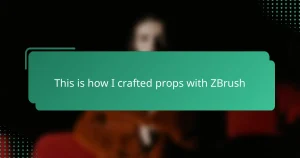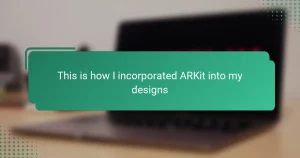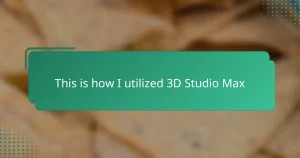Key takeaways
- QLab offers an intuitive interface for lighting control, allowing for complex sequences and automated transitions that enhance storytelling through light.
- Effective lighting in sci-fi props requires understanding color, intensity, and movement to evoke the desired mood and atmosphere.
- Organizing cues logically within QLab and rehearsing setups can prevent technical issues and enhance performance quality.
- Layering cues and utilizing randomization features can create dynamic and realistic lighting effects that elevate the overall impact of props.

Introduction to QLab for Lighting
When I first encountered QLab, I was amazed by its intuitive interface, especially for controlling lighting cues. It felt like having a personal light technician at my fingertips, ready to bring the sci-fi atmosphere to life exactly as I imagined. Have you ever wished you could synchronize lights seamlessly with your props without the usual technical headaches? QLab made that possible for me.
What struck me most was how flexible QLab is—it allows you to program complex lighting sequences with a few clicks, making it perfect for the dynamic needs of science fiction setups. The software’s ability to layer cues and automate transitions transformed the way I approached lighting design. It’s not just a tool; it’s like a creative partner helping me tell stories through light.
Using QLab for lighting also made me appreciate the precision and timing vital to crafting immersive effects. The control it offers gave me confidence to experiment with different moods and scenes, each change feeling deliberate and impactful. If you’re passionate about bringing your science fiction props to life, QLab is worth diving into—it truly opened a new world for me.
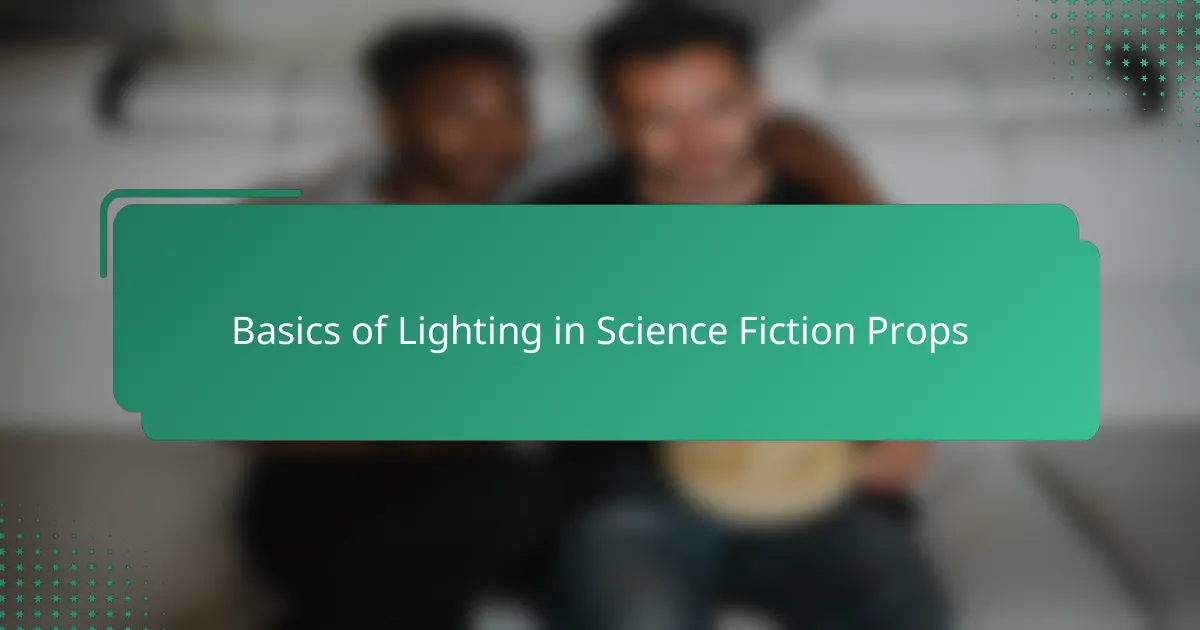
Basics of Lighting in Science Fiction Props
Lighting in science fiction props is all about creating an atmosphere that feels otherworldly and believable. I learned early on that even the smallest glow or flicker can make a prop leap from static to stunning, grabbing attention and sparking imagination. Have you noticed how a well-lit panel or blinking light instantly suggests advanced technology?
Understanding the basics means getting comfortable with color, intensity, and movement. For me, playing with different hues—like cold blues or fiery reds—helped set the tone, whether I wanted something eerie or energetic. It’s amazing how shifting just a few settings can change a prop’s entire personality.
One thing I always remind myself is that lighting isn’t just about visibility; it’s storytelling. Each light cue, subtle pulse, or sudden flare can convey mood or add suspense. When I saw my sci-fi control panel come alive with synchronized lights, I realized how powerful this simple element can be in making props feel truly futuristic.
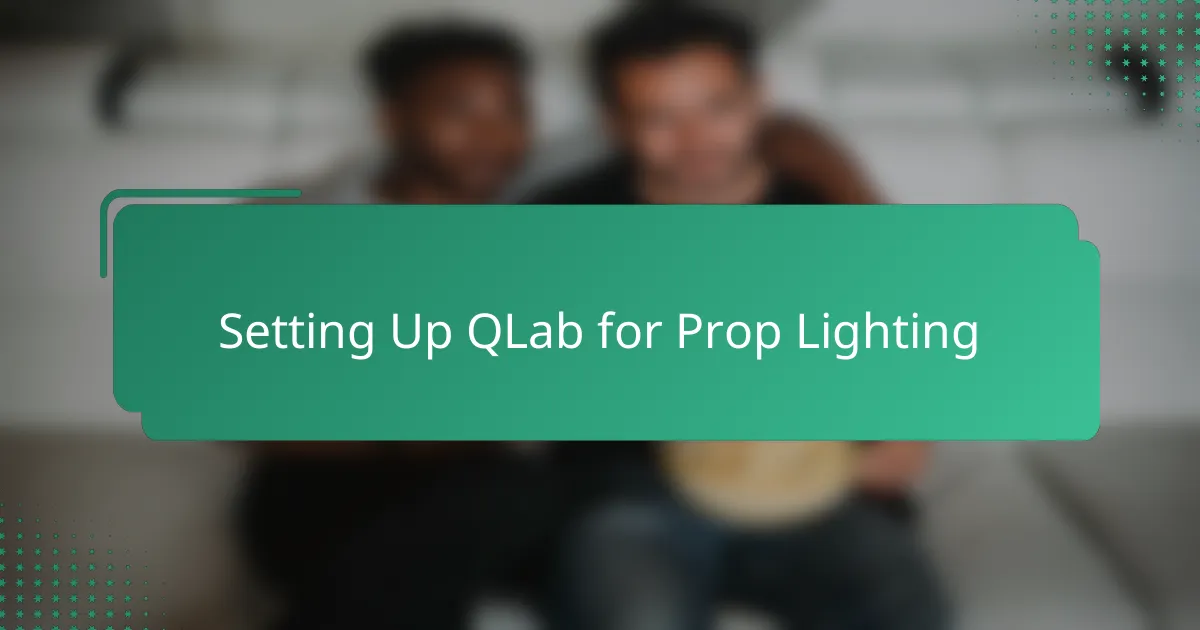
Setting Up QLab for Prop Lighting
Setting up QLab for prop lighting began with mapping out each light channel to the software’s cue list. I remember how satisfying it was to assign specific lights to cues, feeling like a conductor orchestrating a symphony of futuristic glows. Have you tried customizing cue triggers? That moment when a single button press brings multiple lights to life still gives me chills.
Next, I focused on organizing cues logically, grouping them to match different scenes or effects. This approach saved me from scrambling during setups, especially when my sci-fi props needed to pulse or flicker in rapid succession. QLab’s timeline view made it easy to visualize and tweak transitions—something I found invaluable for perfecting subtle effects.
One challenge I encountered was syncing lighting cues with sounds and other prop actions. But setting precise delays within QLab helped me nail that tight synchronization. The first time my blinking console lights synced perfectly with ambient hums, I felt a genuine thrill—it’s those details that made the whole experience come alive.
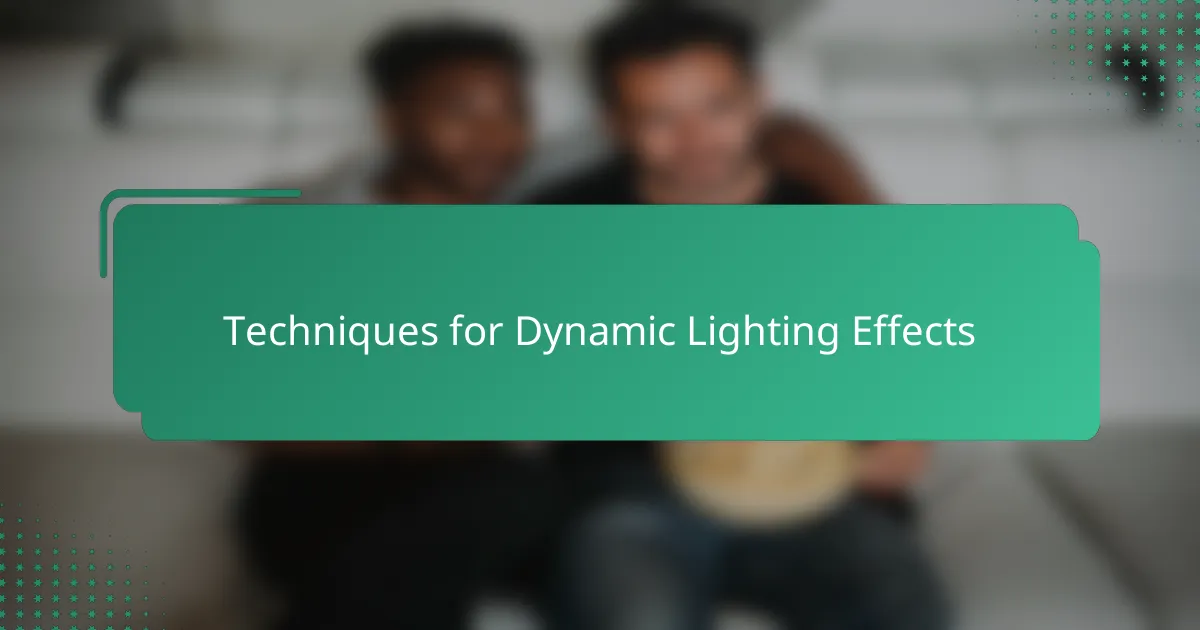
Techniques for Dynamic Lighting Effects
One technique I found incredibly effective for dynamic lighting involved layering multiple cues with varied fade times. It felt almost like painting with light—each gradual transition added depth and complexity to the scene. Have you ever played with overlapping fades? The subtle interplay it creates can make your prop feel truly alive.
Another approach I relied on was using QLab’s randomization features to introduce natural flickering or pulsing effects. At first, I worried this might look chaotic, but surprisingly, it added a realistic unpredictability that suited most sci-fi aesthetics perfectly. When a light flickered just right, it was like my prop had its own nervous energy—something I never thought static LEDs could convey.
Timing was crucial, too. I experimented with syncing my cues to precise moments within a soundscape or actor movement, which took patience but paid off immensely. I remember the pride I felt the first time a sci-fi panel lit up exactly as a character initiated a command—this seamless interaction made the whole story more believable and immersive in a way that simple on/off switches never could.
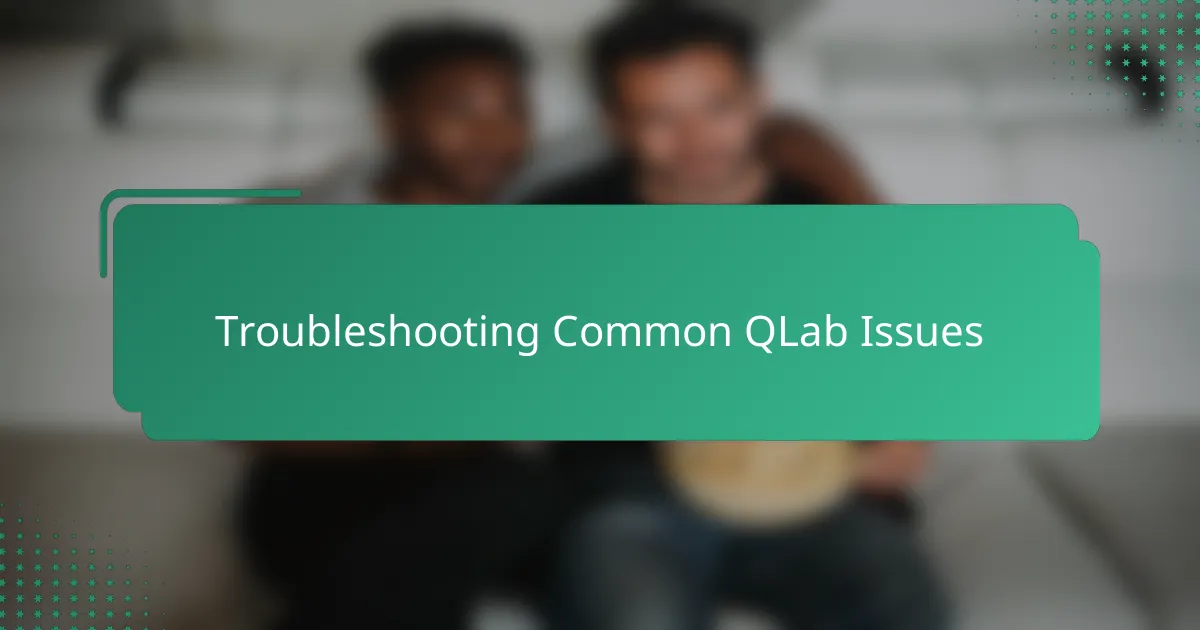
Troubleshooting Common QLab Issues
It’s frustrating when QLab suddenly stops responding or won’t trigger lighting cues as expected—I’ve been there. One time, I realized the culprit was a simple network hiccup between my computer and the lighting hardware; rebooting the devices fixed things immediately. Have you ever overlooked checking your connections first before diving into complex settings? Trust me, it saves a lot of headaches.
Another tricky issue I often faced was cues not executing in the right order or timing. I found that carefully double-checking my cue chaining and ensuring that all delays were correctly set made a huge difference. It’s in the details where QLab’s power really shines, but those details can trip you up if you’re not meticulous.
Sometimes, QLab’s interface itself can feel overwhelming, especially during live prop demonstrations when there’s no room for error. What helped me was creating backup cue lists and running quick rehearsals beforehand—knowing I had a safety net reduced my anxiety and let me focus on the creative flow. Have you tried rehearsing with a fail-safe? It might just become your best lighting habit.
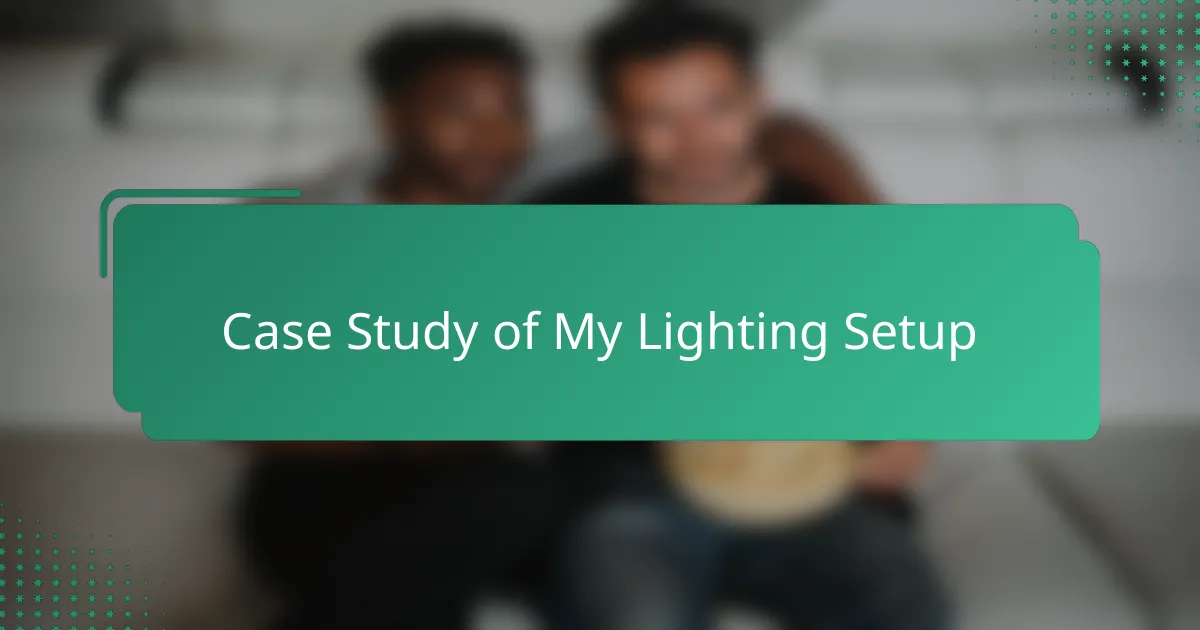
Case Study of My Lighting Setup
When I first mapped out my lighting setup in QLab, I was struck by how much control I had over each individual light’s behavior. Assigning cues felt like giving each LED its own little role in a sci-fi play, and watching them respond precisely as programmed was oddly satisfying. Have you ever experienced that moment when everything clicks and the props start telling their story through light? That’s exactly the feeling I had.
One particular scene demanded a subtle, rhythmic pulsing effect to mimic a spaceship’s heartbeat. I layered multiple cues with different fade-ins and fade-outs, which took some trial and error to perfect. But once I nailed the timing, the effect was mesmerizing—like the prop was truly breathing. It’s small details like these that made me appreciate how powerful QLab is for crafting immersive atmospheres.
Of course, not everything was smooth sailing. Synchronizing the complex lighting sequences with sound effects pushed me to rethink my cue organization to avoid any delays or misfires. I remember the relief when I finally achieved flawless synchronization during my first live demo—it transformed the entire experience. Isn’t it incredible how a well-executed lighting setup can elevate even the simplest prop? For me, QLab made that possible.
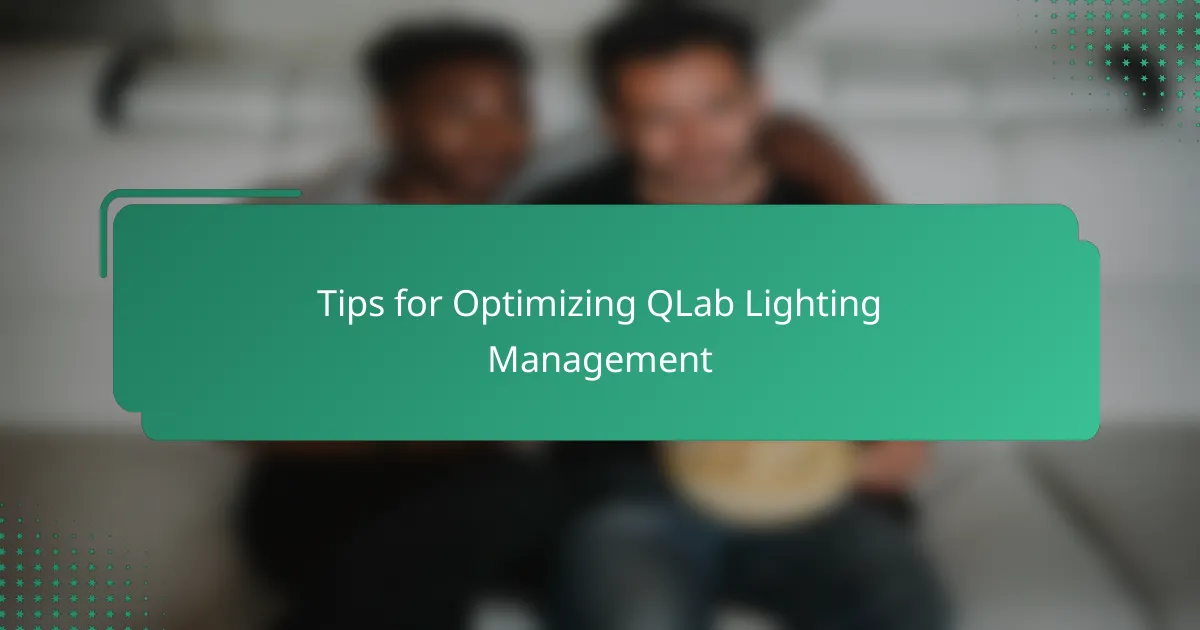
Tips for Optimizing QLab Lighting Management
One tip I always rely on is keeping my cue lists as organized and descriptive as possible. When I first started, vague cue names led to confusion mid-show, so now I write clear labels that instantly tell me what each cue does. Have you noticed how much smoother a session runs when you don’t have to second-guess your cues? It’s a game-changer for staying calm under pressure.
Another insight I gained is the importance of using QLab’s fade and delay settings wisely. Early on, I overlooked how subtle fade-ins and outs add polish and keep transitions feeling natural. I remember the first time a pulse effect synced perfectly with a sound cue—I thought, “This is exactly the kind of detail that separates amateur from pro.” It taught me to be patient and tweak timing until it feels just right.
Finally, I can’t overstate how much rehearsing with your lighting cues saved me from mishaps. Running through the entire sequence multiple times—including backups—helped me spot tricky overlaps or missed delays I hadn’t anticipated. Have you tried simulating your live setup in advance? That practice gave me confidence and turned nervous energy into creative flow every single time.
